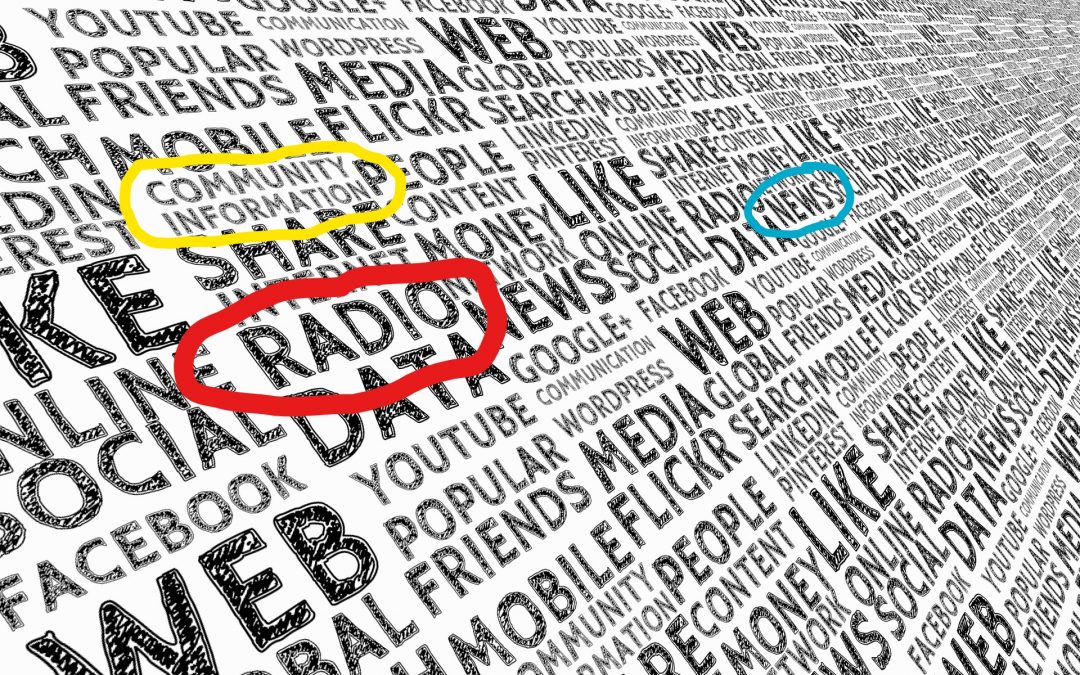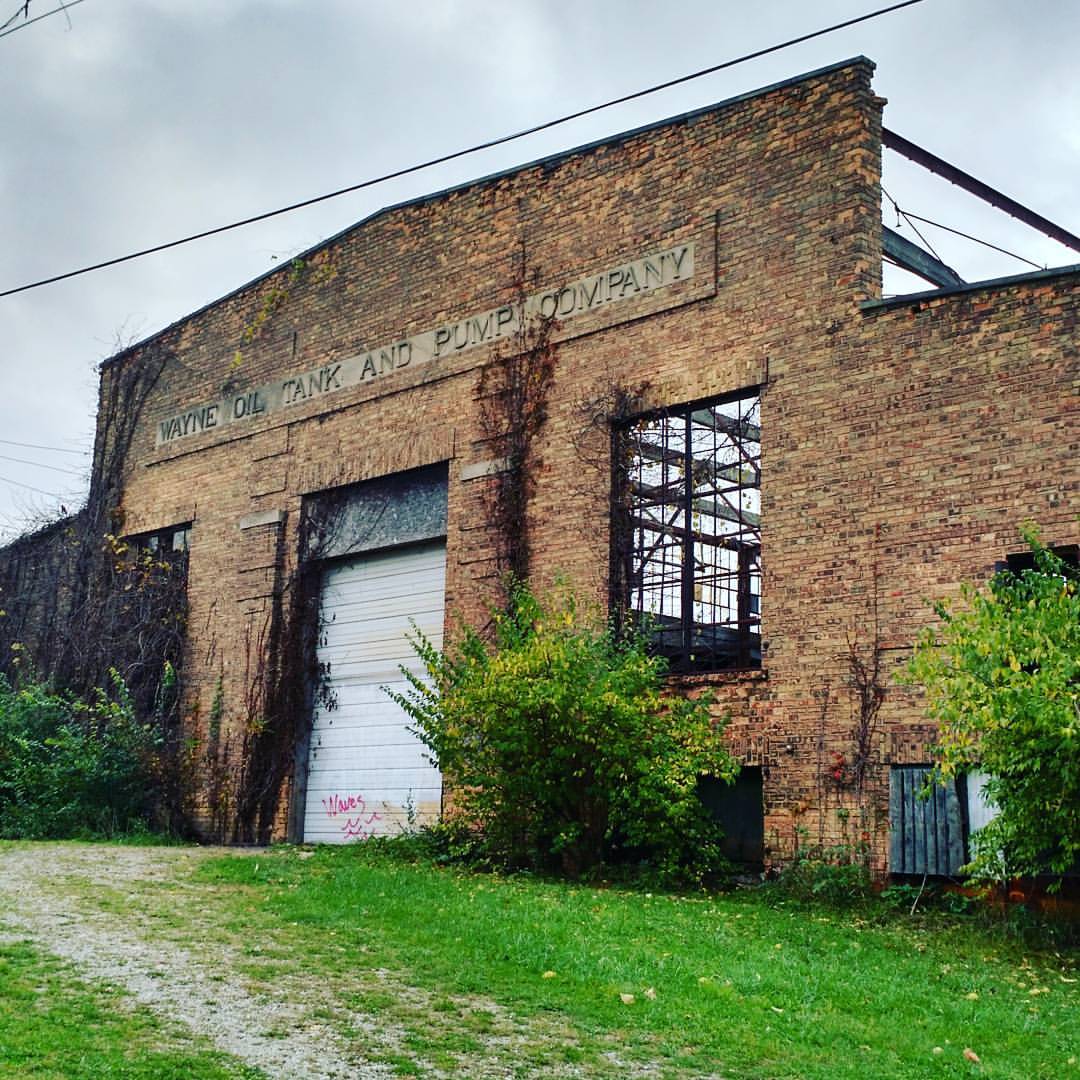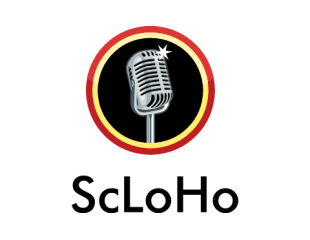
by Scott Howard | Dec 6, 2017 | Marketing and Advertising Insights, ScLoHo's Web World, The Not-So-Secret Writings of ScLoHo, Uncategorized, WOWO Fort Wayne Radio Advertising with Scott Howard
Why do I say Your Digital Marketing Is Bologna?
Especially because I actually sell online digital marketing solutions along with the more traditional radio advertising solutions?
Because it hit me the other day, that those people who only sell digital marketing are often selling the same line of bull, excuse me, bologna that Yellow Pages people used to sell to prove they were a good advertising investment.
Laura from Bain and Company was quoted in an article from Google:
We need to move away from last-click attribution models to something that better reflects a consumer journey, which is nonlinear and has gaps in the data.
In order to tell you why this is important, we’re going to take a minute and explain the old phone book advertising sales technique. I learned this years ago from a co-worker who used to sell yellow pages advertising before he made the conversion to radio advertising sales.

This is what a phone book used to look like
The phone book advertising sales people would tell the businesses that advertise to track their advertising by asking some variation of this simple question:
How did you get our (business) phone number?
More than half the time, sometimes as much as 90% of the time, the customer on the other end of the phone would say:
I got your number from the phone book.
Which was probably true. I mean, they had no reason to lie, and yes they really did get your number from the phone book.
But that’s not the right question to ask to track your advertising.
Depending on the other advertising and marketing that the business was doing, along with their word of mouth reputation, the really successful businesses already were being considered by the customer and the phone book was simply a tool to get the phone number to call the business.
The phone book does absolutely nothing to brand a business, it’s just the way we get the phone number. That’s what I used to say all the time until Google changed the internet and Facebook changed our social communication.
Since the advent of the internet and the demise of the paper-published-phone-book-yellow-pages-directory, the phone books are a lot skinnier.
Only old people have a phone book anymore. And by old, I’m saying 85 year olds.
Those last couple of statements are broad generalizations. Yes, there are some 70 year olds who still have a phone book in their junk drawer in their kitchen and a few other people too.
Digital marketers for the last several years have adopted the tactic that the old yellow page advertising sales people used to use to claim credit for making your business phone ring, or any of the other ways your future customers can contact you.
C. T. R. which stands for Click Thru Rate which is the digital equivalent of asking where do you get our phone number.
Both only measure the last action taken and totally disregard all the previous marketing and advertising efforts that led to that last action or conversion.
We are not robots, we are humans. That’s why I look at all this marketing and advertising from a human relationship standpoint that takes all of the influencing factors into consideration.
I mentioned at the beginning of this piece that I sell both radio and online advertising solutions with WOWO radio and Federated Media Digital Solutions and often use a combination of these to drive more business to my advertising partners.
While it is possible to look at Click Thru Rates and other tracking with your online and digital efforts, if I were to tell you that was the only way to determine your success, it would be a lie. That’s why I say Your Digital Marketing Is Bologna. There is really nothing wrong with it, just the way you are being sold and I’m sure you prefer an honest approach right?
Talk to me if you want to… talk.

by Scott Howard | Sep 13, 2017 | Marketing and Advertising Insights, ScLoHo's Fort Wayne, ScLoHo's Media, The Not-So-Secret Writings of ScLoHo, WOWO Fort Wayne Radio Advertising with Scott Howard
NewsTalk 1190 WOWO Radio in Fort Wayne, Indiana is going to be 100 years old soon. Despite the most recent doomsday report that AM and FM radio stations would be obsolete before WOWO hits 100, I’m here to present some real reasons that the report is both right and wrong.
Broadcast radio is struggling to remain relevant as consumers embrace streaming platforms, according to a groundbreaking study that examines the disruption to radio caused by digital services.
These trends are crippling radio, which is witnessing historic declines in its audience and its relevance to listeners and advertisers. To survive, radio must innovate, learn from other media, and take control of its path forward into the third decade of this century and beyond.
That’s the intro to a 30 page report that says radio stations like the ones I work for are going the way of the phone book. Here’s a direct link to the entire report if you want to really dig in.
A dozen years ago, I was making the same prediction. Music radio was going to be a thing of the past. At the time I worked with legendary Fort Wayne WXKE Radio Icon Doc West and Doc knew the answer to the problem of music radio stations losing listeners to streaming services and satellite radio stations. Live and Locally Relevant. That was the mantra that Doc used to stay at the top of the heap of radio personalities back then.
WOWO radio used to be a music station when I was a kid and the most listened to radio personality before Doc West was Bob Sievers. His morning program on WOWO had 90% of the available audience tuned in. Farmers for the farm reports, kids like me, waiting to hear the weather, well, actually the school closings and everyone else listened to Bob on WOWO to know what was going on. Bob and WOWO were Live and Locally Relevant.
My reason for predicting the demise of AM & FM radio back then was the digital age as auto manufacturers were adding internet to their vehicles. More options for drivers to listen to their favorite music. I knew it would be an evolving change, simply because it would take time for these internet connected cars to replace the older vehicles.

Your Car, a “radio on wheels”
But then something else has kicked in that I didn’t foresee. The Internet of Things.
The IoT as it is called is the interconnection of stuff via the web that we didn’t need to have connected to the web previously.
The ability for your phone to respond to voice commands was a preview of what we have now with Alexa and the other digital personal assistant devices that are becoming common place.
But back to my headline for this story:
Why WOWO Radio Will Outlast The Naysayers
WOWO radio and our sister stations at Federated Media are embracing the digital age. They were the first in Fort Wayne to jump in and offer the radio programming to listeners on what ever digital platform the listeners wanted. Then they went a step further and began producing content that goes beyond what you can get by listening to the AM & FM radio signals. Podcasts, Videos, and plenty of on-demand content that you and I can read, watch or listen to when we want, where we want.

Listen to what you want, when you want
Our music stations, in Fort Wayne including WMEE, K-105 and 98.9 The Bear have been Live and Locally Relevant for decades! WOWO Radio with our News and Talk format for the past 20 years has a couple of national talk shows in the middle of the day, but every 30 minutes, we have Live and Locally Relevant news updates. Fort Wayne’s Morning News with Charly Butcher starts the weekday and afternoons with the Pat Miller Program, bookend each weekday with Live and Locally Relevant programming.
In case you still need another antidote as to the importance of local media, during tragic events like Hurricane Harvey, it was the local Texas radio stations that were the dominate source of information. Television isn’t portable but radio is.
But what about the radio audience overall? Is it shrinking?
After the report from the naysayer, two more reports came out to counter his claims. You can read them here and here.
But what I care about and so do the businesses I work with who use WOWO Radio to advertise by inviting our listeners to become their customers, is what is the state of radio listenership in Fort Wayne Indiana?
I researched it for this story. I have access to the Eastlan radio surveys from 2013 thru today that measures radio listener habits every 6 months in Fort Wayne.
Between 2013 and 2017, the total number of people age 12 and older who listen to a radio station in Metro Fort Wayne has grown by 25,000.
Boom.
Mic Drop.
396,000 weekly listeners in the spring of 2013.
421,000 weekly listeners in the spring of 2017.
How’s WOWO doing? Every survey that I have access to (including before 2013) show that WOWO radio continues to lead the pack with over 100,000 listeners every week, and 98%+ are grown ups.
In about 8 or 9 years WOWO will be celebrating a century of service. Now is the right time to join the other advertising partners who benefit from being on WOWO. Contact me to find out how.

by Scott Howard | Jul 12, 2017 | Marketing and Advertising Insights, ScLoHo's Media, The Not-So-Secret Writings of ScLoHo
Today, a common sense approach to buying advertising that nearly anyone can figure out. You can out smart the media buyers at the advertising agencies if you simply consider How to Use Habits to Buy Advertising.
I used to work with media buyers from advertising agencies that were taught how to crunch numbers from data collection and rating services and figure out the perfect number of ads to run to come up with a winning formula.
Now they don’t even have to crunch those numbers, it’s all done for them with proprietary software that does the math and spits out the formulas.
However those kinds of systems are flawed. And many media buyers don’t know the process or they wouldn’t use the systems.
I’m going to delve into the rating systems of radio and television since that is the data I have access to. Nearly any form of media marketing including digital, print and well, you name it have similar complicated systems that are supposed to be better than what you and I can come up.
Those systems are flawed because they put too much emphasis on questionable numbers and they would routinely tell me things like, I need to place 19 commercials between 3 and 7pm to have the same results as 2 commercials between 10am and 3pm on a certain radio station.
Bizarre stuff, really and I’m not going to bore you with the details of how the software came up with crazy stuff like that.
But I’m going to show you how to beat these systems and be smart.
We are creatures of Habit.
Think about the last few days. You have your workday morning routine before you leave the house. You have your workday evening routine before you doze off at night.
Pretty predictable right?

We all follow routines
Your workday has certain routines too, I bet. Expand this thinking about routines and you’ll see patterns of media and advertising consumption based on our habits.
The key is to understand the habits of the types of people you want to reach with your advertising and then place your advertising messages where and when those people will see or hear them.
The advertising salesperson should be able to tell you something of value about the audience or readership of their advertising medium. Stuff like age, income, and other useful demographics to see if there is a connection between them and you.
Once you determine it could be a good fit, then you need to figure out how many ads and where exactly they should be placed. We call this Reach and Frequency and I’ll share more about this in the future.
But for now, the take away is that you can be pretty smart about your advertising by simply thinking about the routines of your current and potential customers. Armed with that knowledge, you can Use Habits to Buy Advertising.
Want help? Reach out to me.

by Scott Howard | May 4, 2017 | Marketing and Advertising Insights, ScLoHo's Web World, The Not-So-Secret Writings of ScLoHo
Today we’re going to talk about your business credibility, or at least a part of it.
Is Your Business Homeless?
Before the internet, most businesses had what are known as brick and mortar locations, a storefront or at least a physical location. There were some exceptions, but for the vast majority of businesses, your physical location was a key component of establishing credibility.
Then the internet came along and has slowly been changing our world. I recall the Windows 95 computer operating system and dial up internet connections that used a hardwired telephone landline to connect to the World Wide Web and it was pretty cool to be visit websites from that big clunky computer at home.
Enough reminiscing, those were not really the good old days of the internet. Although every month I run into business people who are seemingly stuck back in those days.
Your business needs a website.
I’ve been saying that for over a dozen years.
There are some businesses that still don’t have a website.
Your business not having a website is the equivalent of your business being homeless.
If your potential customers cannot find you online with a simple Google search, your business does not exist. Say you are a plumber. If I ask Siri to find me a plumber and you don’t have a website, according to Siri, you don’t exist, but your competitors do.
Personally my phone is not an iPhone but an Android and I can talk to it and it does the same, maybe better than Siri.
For those of you who are stubbornly resisting getting a website for your business, you might as well sell your business to someone who will bring it up to speed before your business dies a slow agonizing death.
Next, I want to talk to those of you who have not updated your website in the past 5 years. Your business may not be “homeless” online, but your business presence is most likely obsolete.
You are not alone. I see dozens of outdated websites every month. This is hurting you more than you realize.
First off, if I find your business website and it looks dated, you are losing credibility simply because of the first impression your old website presents. Even if you are the very best at what you do, if your website looks like it hasn’t been kept up to date, I don’t know if your business is trustworthy. This judgement call isn’t even a conscious one we make.
Another way your old website is hurting your business credibility is that Google and the other search engines will penalize your business website if it does not meet the standards that they deem are important.
Google uses two primary criteria to decide which webpages show up when we search and one of those is the technology that powers your website. Starting in April 2015, if your website was not mobile friendly, Google began rolling out an algorithm that made your site less visible to people searching for what you offer.
Right now Google is in the process of another algorithm update for those of us that use the Chrome browser which is powered by Google. If your website does not have a security certificate, Google may warn and block users from visiting your business website. This is used as an assurance that any information we give a website is securely managed.
Please, if you have not updated your business website to make it secure and mobile friendly, make that a priority.
Before we wrap this up, I want to address those of you who are attempting a work-around, and avoiding having your own website and instead relying on Social Media accounts like Facebook to be you online business presence.
It’s not legit. It’s not a real website and it’s not adding to your business credibility. Besides, since you don’t own Facebook, Facebook can basically do what ever they want and change the rules of how you can use their platform. It’s all in those pesky “terms of service” updates that all of us, me include ignore and blindly agree to when they come our way.
Yes, Social Media including Facebook is recommended for most businesses, but only in conjunction with your own up to date, secure and mobile friendly website.
Want to talk about this or need more details? Let’s connect.
You can also listen to this as a podcast each week:
by Scott Howard | Feb 5, 2017 | Marketing and Advertising Insights, ScLoHo's Media, The Not-So-Secret Writings of ScLoHo
If you are a local business that bought advertising time on your local Fox TV affiliate to air in the 2017 Super Bowl, I’d like to talk to you about the money you wasted.
If you are a business that bought advertising time on the Fox TV Network for the 2017 Super Bowl, you better have deep pockets and a helluva follow up plan.
Anyone who spends a million bucks for 30 seconds of air time is bordering on crazy. And I heard that 5 million was the price for a half minute on Fox this year.
But this article is about the locals, not nationals.
Why am I so down on advertising during the NFL championship? After all, isn’t this the big daddy and the place to be so “everyone” knows about your company and brand?
That was true about 20 years ago. But today, no.
We have seen a huge growth in viewing options recently and the number of choices to watch this years Super Bowl is greater than ever. I can watch online, on various subscription channels or my favorite watering hole.
We also have the option to not watch football and to watch anything else. I have not watched an entire NFL game from start to finish this season and so this will be the one and only game I will watch.
I could have written this article 20 years ago with the same title, “The Stupidity of Advertising in the Super Bowl” and left out 90% of what you just read. Here’s the real reason I think spending your advertising money to be in this game is dumb:
You’ve blown a big chunk of money on an ad that is going to be forgotten. You can’t compete with the national advertisers for production quality. Odds are your TV commercial is going to be seen in the 3rd or 4th quarter and depending on how the game goes, viewership will either drop or stay steady. If it’s a blow out, then less people will be paying attention.
Look, most people are not going to take action and spend money with you because your business was on TV during the Super Bowl. Unless you have a consistent plan that uses the principles of both reach and frequency, you are one and done.
When I watch the game, I’ll be taking note of the local businesses that though advertising in the Super Bowl was a good idea. Then I’ll reach out to them this month and help them develop a winning strategy for the whole year. If they have any money left.
If you are one of those local advertisers and you are offended by what you just read, then let’s talk and I’d love for you to show me and educate me.
If you are a local advertiser who bought commercials in the game because it sounded like a good deal, then perhaps you could use a marketing coach. I can help with that too.









